Why do we lock juveniles up for life and throw away the key? Race plays a big part.
The United States is the only country in the world that sentences people under 18 to die behind bars. Which states do it, and why?
by Joshua Aiken, September 15, 2016
The United States is the only country in the world that sentences people under 18 to die behind bars. The Supreme Court has twice declared many of these sentences to be unconstitutional, but some states are resisting the Court’s required reforms. (In 2012, the Court struck down mandatory juvenile life without parole sentences. Earlier this year, the Court made that decision retroactive.)
While a number of states continue to use life without parole sentences for juveniles, new research shows that those juveniles are largely and increasingly people of color. A recent study by researchers from the Phillips Black Project found that people of color are overrepresented in the juvenile life without parole population “in ways perhaps unseen in any other aspect of our criminal justice system.”
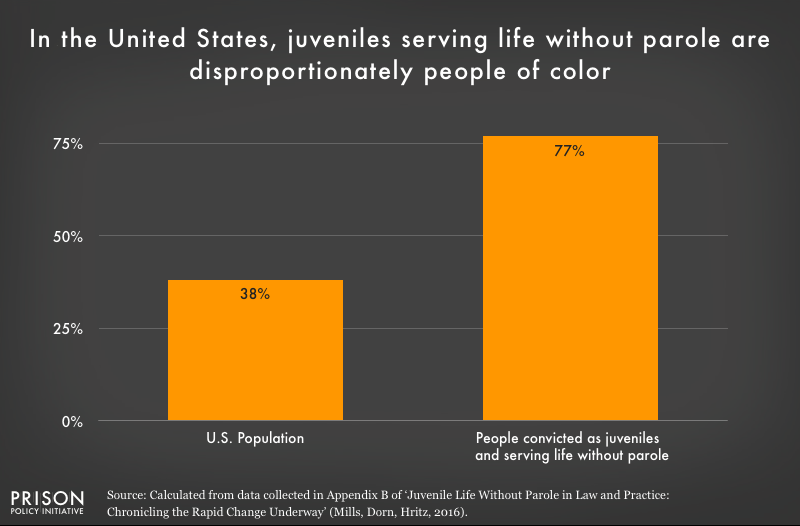
Young black people are hit hardest by prosecutors’ punitive approach. This is unsurprising. Black children are more likely to be punished by their teachers for the same behaviors, are 2.3x more likely to be referred to law enforcement by school officials, and 3x more likely to be suspended or expelled than their white peers.
Being sentenced to die behind bars, however, is especially egregious. The Phillips Black Project found that black youth are twice as likely to receive a juvenile life without parole sentence compared to their white peers for committing the same crime.
Significantly, the researchers found that racial bias exists in the prosecutorial and judicial phases of the criminal justice system. Controlling for the fact that black youth have more encounters with the police, this study compared the number of black and white juveniles life without parole sentences against the number of relevant arrests.
By focusing only on the disparate outcomes that occur after the moment of arrest, the Philips Black Project researchers call attention to how prosecutors and courts fail to fairly determine guilt, innocence and punishment.
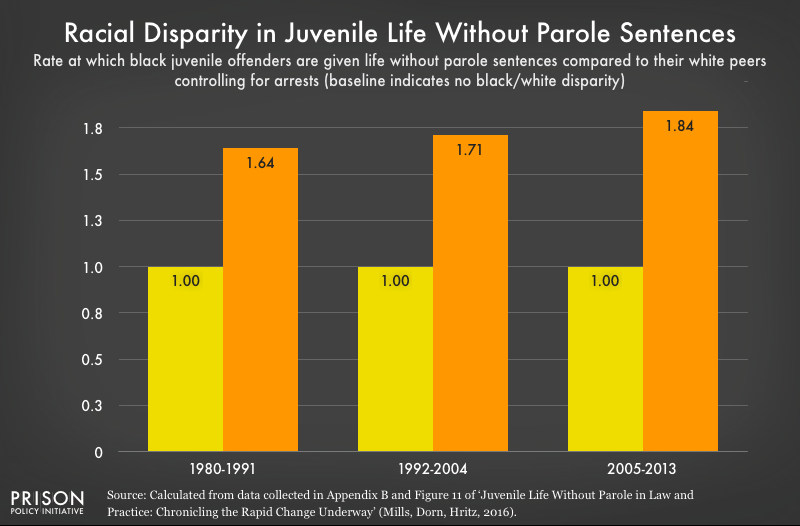 The Philips Black Project data controls for differences in policing practices to identify increasingly racially disparate outcomes that originate with prosecutors and the courts.
The Philips Black Project data controls for differences in policing practices to identify increasingly racially disparate outcomes that originate with prosecutors and the courts.
This finding gives new urgency to the 2014 findings of psychologists in the Journal of Personality and Social Psychology that black youth are generally less likely to be seen as innocent and more likely to be perceived as adults. This result was particularly strong when black youth were accused of a serious crime.
The good news is that juvenile life without parole sentences are falling out of favor; at least eighteen states have abolished the sentence altogether. Sadly, there are a handful of states that have steadfastly held onto the punishment. Just nine states account for four out of every five cases.
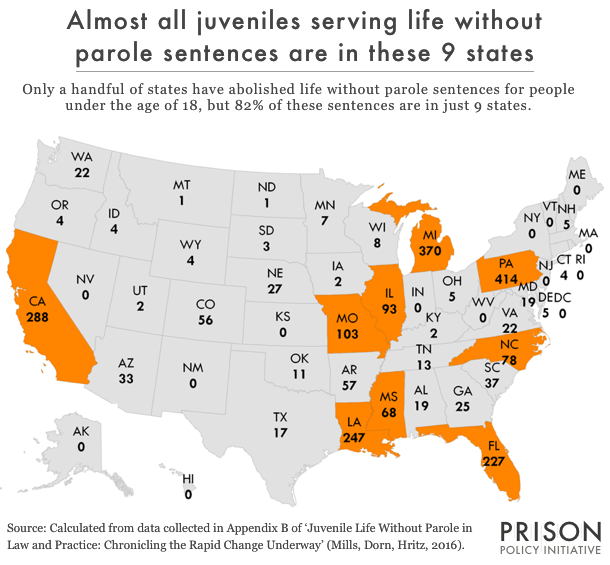
Legislators in these states have been remarkably resistant to reform. Take Louisiana for instance. This June, after passing the House with a resounding 83-2 vote, a Senator filibustered the bill with just ten minutes left in the legislative session. For the thousands serving these sentences, the next legislative session, and a chance at a second chance, can’t come soon enough.
Juvenile life without parole sentences are not only irredeemably harsh but are also indicative of the racial biases ingrained in our criminal justice system. Below I’ve put together graphs showing just how overrepresented people of color are in eight of the nine states responsible for the vast majority of juvenile life without parole cases. (California does not provide data on the race and gender of its juvenile life without parole population.)
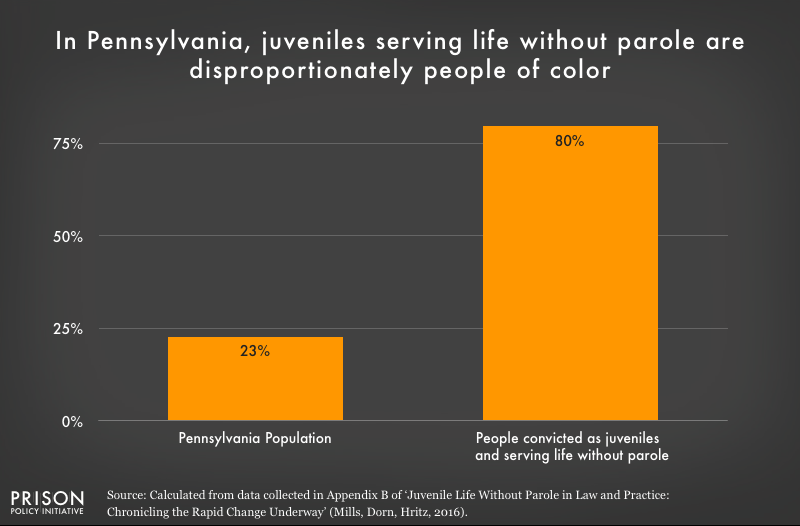
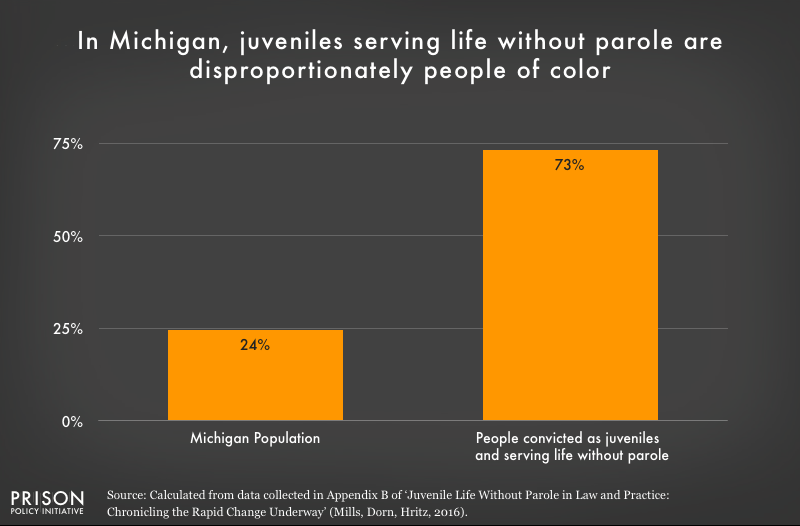
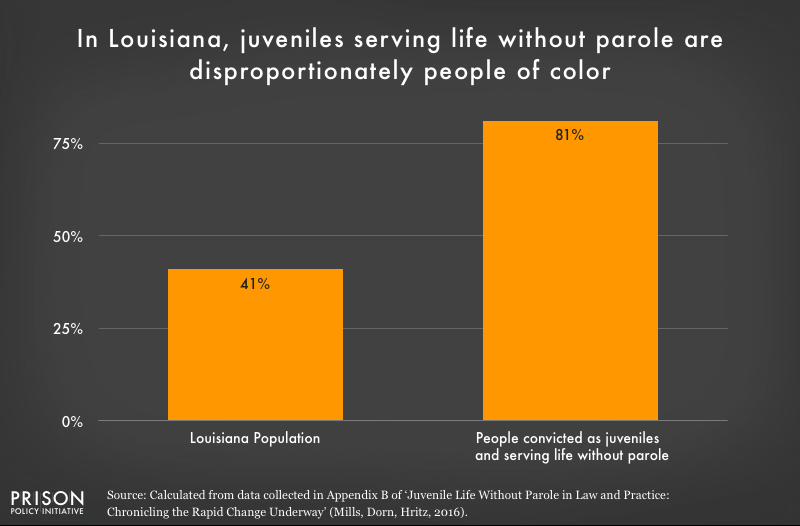
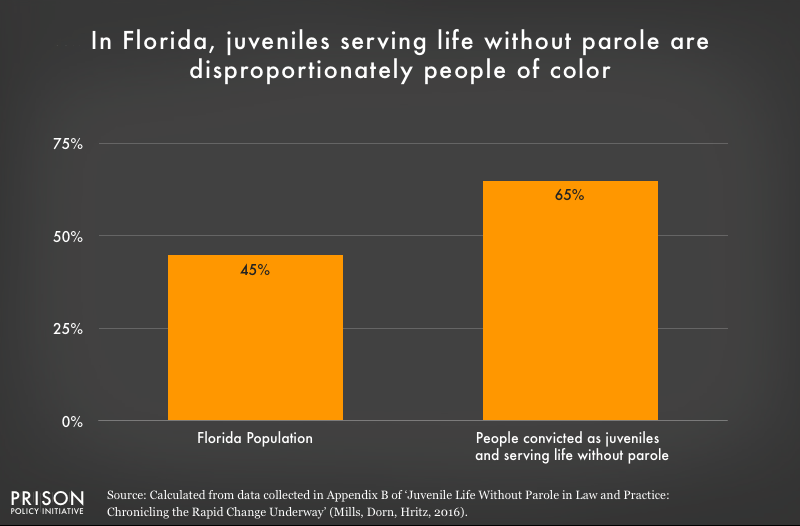
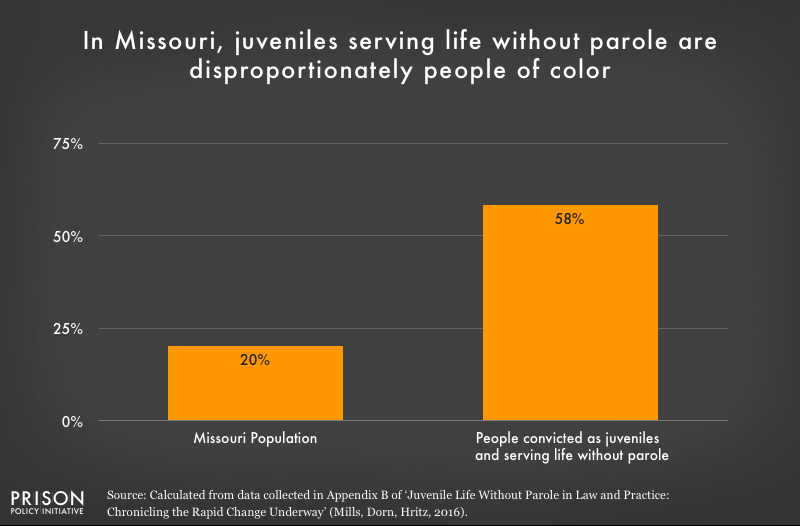
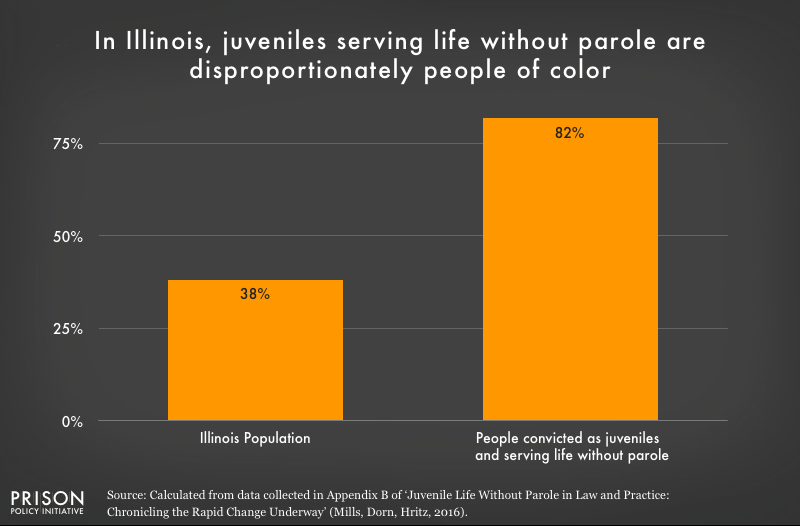
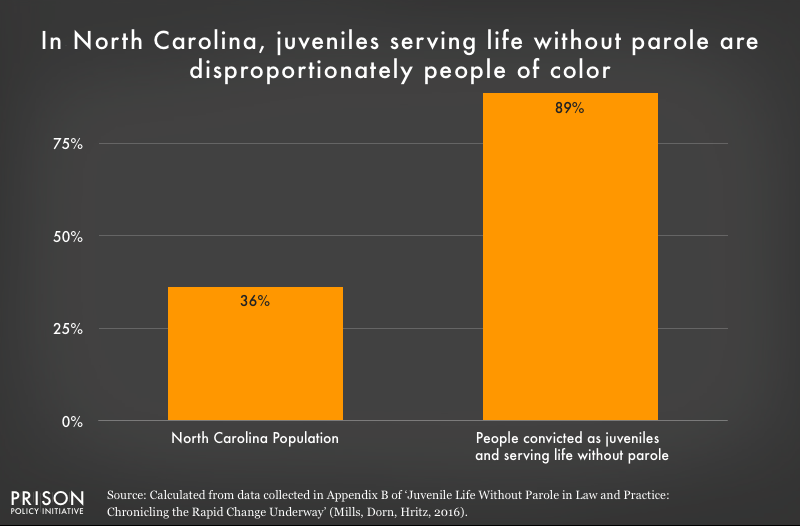
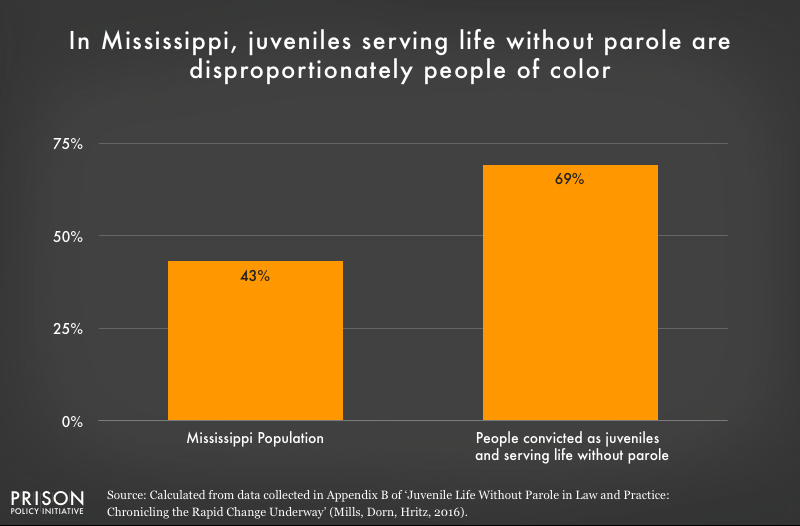
Note: In order to calculate the national and state-level people of color population, I used 2015 U.S. Census data as to match the data collection period of the Mills, Dorn, Hritz study. Additionally, my use of people of color is based on analyzing Census data for all respondents who do not identify as ‘Non-Hispanic White.’



